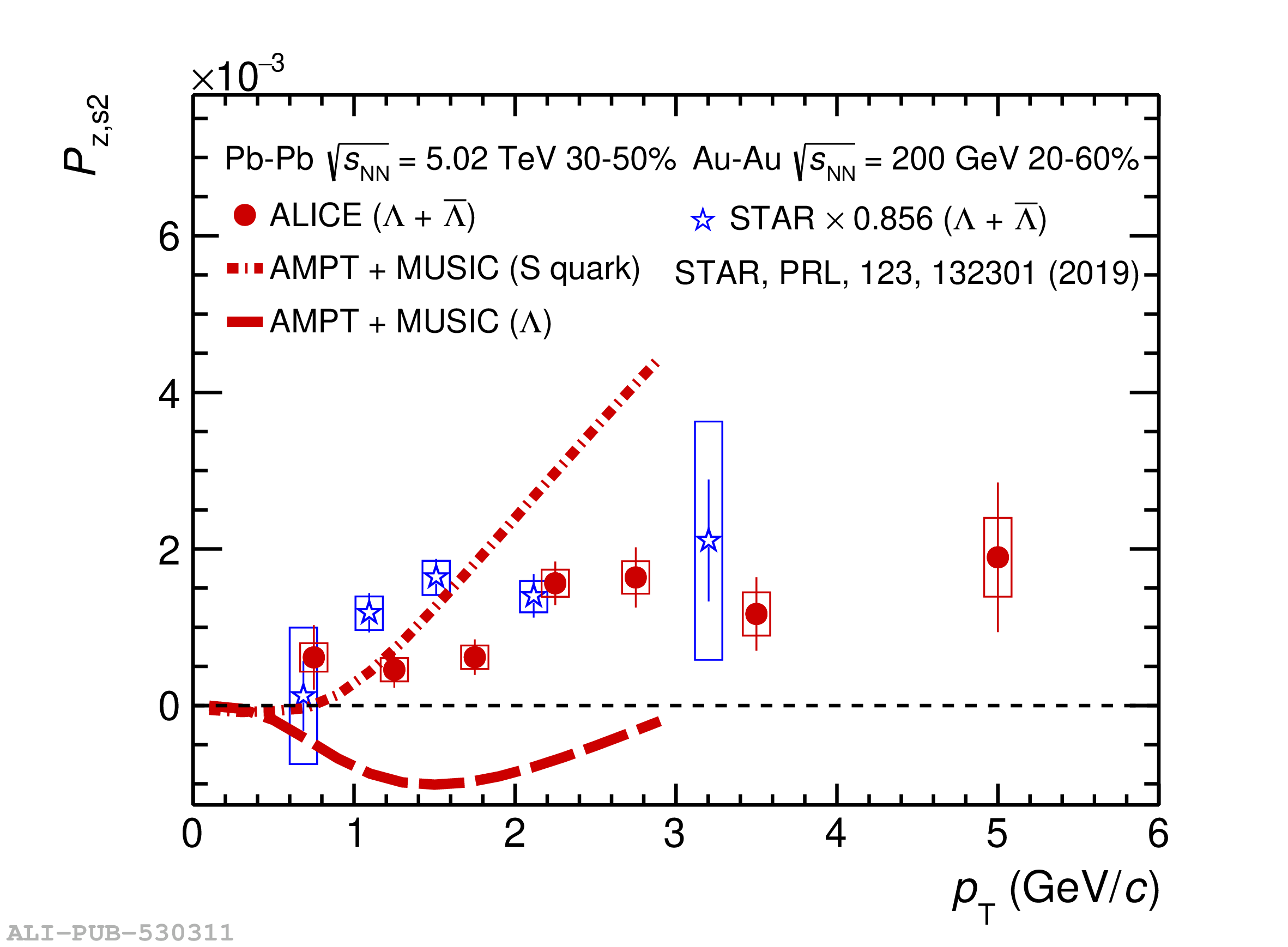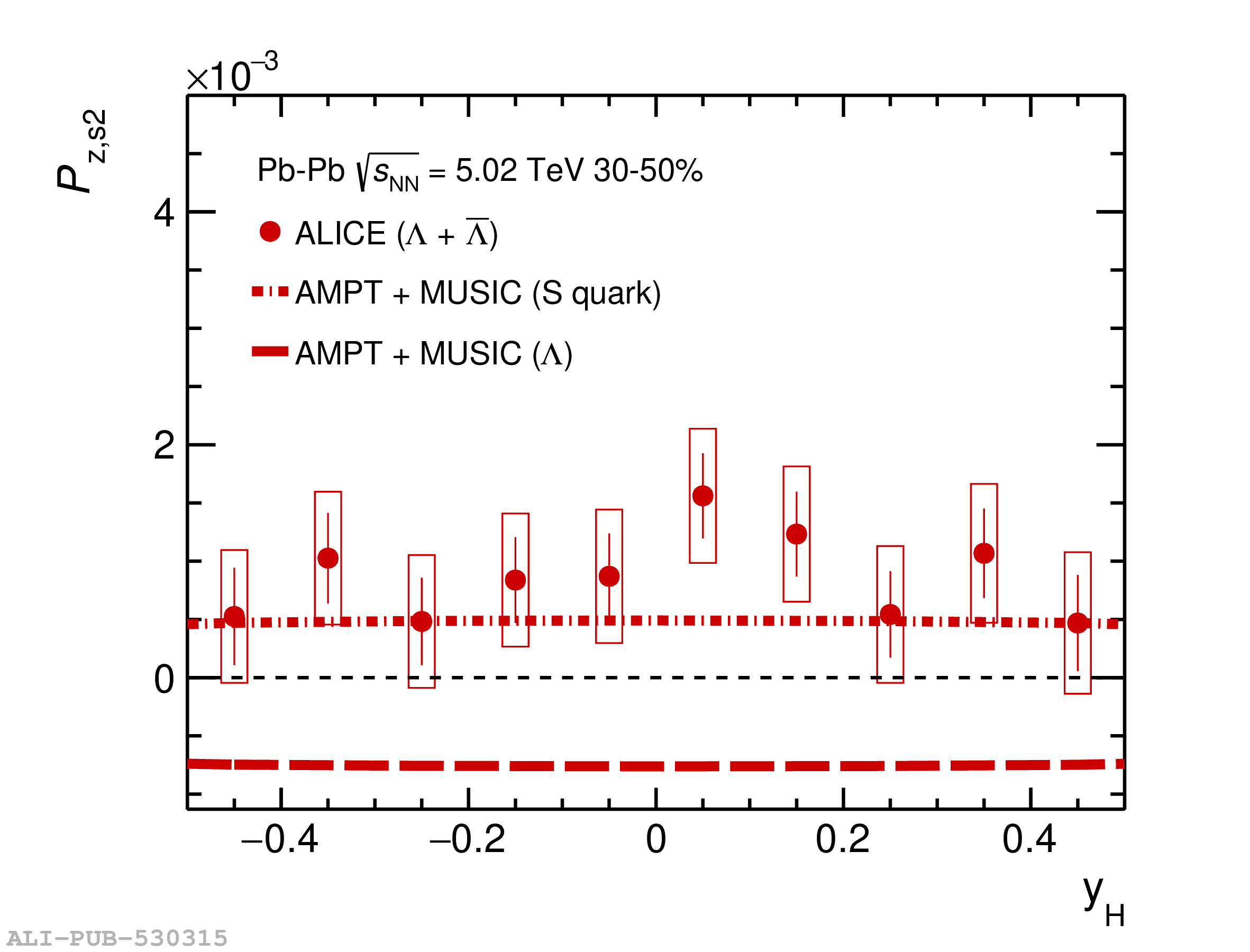The polarization of the $\Lambda$ and $\overline\Lambda$ hyperons along the beam ($z$) direction, $P_{\rm z}$, has been measured in Pb-Pb collisions at $\sqrt{s_{\rm NN}}$ = 5.02TeV recorded with ALICE at the Large Hadron Collider (LHC). The main contribution to $P_{\rm z}$ comes from elliptic flow induced vorticity and can be characterized by the second Fourier sine coefficient $P_{\rm z,s2} = \langle P_{\rm z} \sin(2\varphi - 2 \Psi_{\rm 2}) \rangle$, where $\varphi$ is the hyperon azimuthal emission angle, and $\Psi_{\rm 2}$ is the elliptic flow plane angle. We report the measurement of $P_{\rm z,\,{\rm s2}}$ for different collision centralities, and in the 30-50% centrality interval as a function of the hyperon transverse momentum and rapidity. The $P_{\rm z,\,{\rm s2}}$ is positive similarly as measured by the STAR Collaboration in Au-Au collisions at $\sqrt{s_{\rm NN}}$ = 200 GeV, with somewhat smaller amplitude in the semi-central collisions. This is the first experimental evidence of a non-zero hyperon $P_{\rm z}$ in Pb-Pb collisions at the LHC. The comparison of the measured $P_{\rm z,\,{\rm s2}}$ with the hydrodynamic model calculations shows sensitivity to the competing contributions from thermal and the recently found shear induced vorticity, as well as to whether the polarization is acquired at the quark-gluon plasma or the hadronic phase.
Phys. Rev. Lett. 128 (2022) 172005
HEP Data
e-Print: arXiv:2107.11183 | PDF | inSPIRE
CERN-EP-2021-148
Figure group




